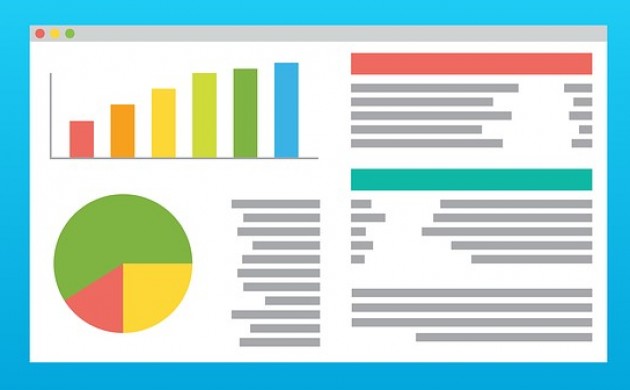Making Tax Digital (MTD) - The countdown is on
Making Tax Digital (MTD) is making fundamental changes to the way the tax system works; transforming tax administration so it is more effective, more efficient and easier for taxpayers and agents to 'get it right'
The first phase for MTD only applies to VAT.
Who is affected by MTD?
From April 2019, any legal entity that is VAT-registered and has a taxable turnover above the VAT threshold (£85,000) must:
- keep digital records
- use software that has Application Programming Interface (API) enabled to upload their VAT return to HMRC
- be compliant from the first VAT Return period post 1 April 2019.
A few exceptions to the 1 April 2019 start date have been announced by HMRC to take into account those businesses with more complicated VAT arrangements. In these instances an October 2019 start date has been proposed. Further information about exceptions can be found here.
The wider roll out of MTD is currently set for April 2020. From April 2020 it will become mandatory to submit quarterly returns with similar detail to annual self-assessment or corporation tax return.
VAT registered entities that have a taxable turnover below the VAT threshold (£85,000) or non VAT registered businesses can voluntarily join the MTD scheme from 1 April 2019 or they can continue to use their usual method of submission until April 2020.
Will there be exemptions?
Similar to current exemptions from electronic filing, MTD for VAT will also allow for some exemptions. Currently they are:
- Insolvency procedure - MTD registration is voluntary
- Religious Grounds - Practising members of a religious society whose religious beliefs prevent them from using a computer
- Not reasonably practical such as age, disability, remoteness of location
If your business is currently exempt from online filing then you will continue to be exempt from MTD. If you think your business may be exempt from MTD you will need to contact the VAT helpline as each case is considered in isolation. Should they determine that your business is not exempt, they will provide digital assistance.
How will I know when to join MTD?
In all cases it is the responsibility of the business owner to identify when they need to join MTD, not HMRC. Any business that has a taxable turnover above the VAT threshold from 1 April 2019 must ensure they are VAT registered and join MTD from the first VAT period beginning on or after 1 April 2019.
Failing to join MTD when required could result in penalties being issued so it is important that business owners understand the requirements of MTD and how they impact their particular business.
It is also important to note that once your business has joined MTD it cannot opt out at a later stage. The only way to 'leave' MTD will be through deregistration.
What will be changing?
Aspects that will change:
- VAT Returns will be compiled by 'pulling' data from digital records
- VAT Returns will be sent to HMRC via API enabled products NOT through the Government Gateway* VAT portal
*The Government Gateway portal will remain open, so it will be possible to lodge a VAT Return through it, however those businesses that are part of MTD will not be compliant if they lodge their VAT Return using this method. Penalties may apply.
Aspects that will remain the same:
- 9 Box VAT Return
- VAT Return frequency and payment deadlines
- Eligibility for VAT special schemes and the ability to remain part of the schemes once MTD is implemented.
What is meant by digital records and digital links?
Under the introduction of MTD, the record keeping process and associated deadlines are not changing, just the format in which records are kept.
As such, records can still be manual but they must be digital when the VAT Return is submitted, using MTD compatible software.
If you already use software, you should speak to your software provider to find out when it will be MTD-compatible and what you have to do. A list of software developers that have already produced MTD VAT-compatible software is available on GOV.UK This list will continue to be updated as the MTD pilot progresses and more products become available.
You do not need to keep any additional business records because of MTD. However, business records must be kept digitally to be compliant. If you use spreadsheets, the spreadsheets must be able to submit the required data to HMRC digitally, for example, by using MTD-compatible bridging software.
Bridging software allows relevant data to be digitally exchanged from the spreadsheet or other source where the digital records are kept, directly to HMRC. The summary information must not be physically re-typed into another software package.
For larger businesses using bespoke in-house software solutions, make sure your IT team is aware of the new MTD technical standards as they may want to link in-house solutions directly to HMRC’s APIs. For more information contact SDSTeam@hmrc.gsi.gov.uk.
How can CavanaghKelly help?
Our Client Managers can work with you to complete your business VAT preparations and reviews and complete the submissions via compatible spreadsheet records.
Our team can also work with you to provide a part-serviced or fully services book-keeping function, depending on your business needs.
If you would like more information or would like to register your interest in CavanaghKelly assisting you through the Making Tax Digital process please get in touch.
Whilst every effort has been made by CavanaghKelly to ensure the accuracy of the information here, it cannot be guaranteed and neither CavanaghKelly nor any related entity shall have liability to any person who relies on the information herein. Information given here is for guidance only. Detailed professional advice should be taken before acting on any information contained herein. If having read the guidance here, you would like to discuss further; a member of our team would be pleased to help you.

